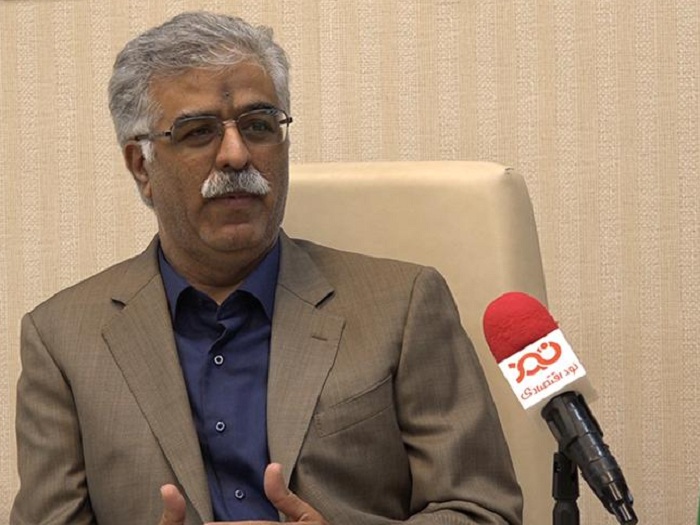The volume of trade between Iran and Oman decreased by 40%

Chairman of the Iran-Oman Joint Chamber: The volume of exchanges between the two countries reached $ 1,161 million two years ago, at the height of sanctions; But that figure dropped to $ 694 million last year.
According to the International Iranian Stone Exhibition, Mohsen Zarabi considered Oman as one of the reliable and valuable trading partners for Iran and emphasized: Oman during the outbreak of coronary heart disease, when most countries closed their borders to Iranian goods, not only their borders It did not stop but increased the shipping lines to Iran.
Emphasizing the availability of basic infrastructure for the development of trade and investment relations between Iran and Oman after the lifting of US unilateral sanctions against Iran, he said: "The greatest impact of sanctions on Iran's banking relations with other countries and then to some extent on Transportation has been affected. Thus, it is predicted that in the case of Oman, if the sanctions are lifted, the private sector will be able to increase the volume of trade more rapidly.
Zarabi mentioned the reduction of foreign exchange transfer costs and positive effects on the volume of non-oil exports as consequences of the lifting of sanctions and said: "There is the necessary infrastructure to strengthen Iran-Oman relations and the only major problem between the two countries is the lack of banking system and money transfer." We hope that this issue will also be resolved by lifting the sanctions.
According to him, with the beginning of sanctions and the severance of some countries' relations with Iran, the Omani government not only did not cut its trade relations, but also tried to increase economic relations within the framework of international relations and with a win-win system. Oman's approach was maintained even during the outbreak of coronary heart disease, and we saw an increase in the country's shipping lines in April this year and the following months.
Zarabi further referred to the volume of exchanges between Iran and Oman. The volume of trade between the two countries in 1392 was equal to 221 million dollars and in 1397 and at the height of sanctions reached 1 billion and 161 million dollars. This figure was 694 million dollars in 1398, the reason for its decrease should be sought inside Iran.
The head of the Iran-Oman Joint Chamber said that the main reason for the decrease in the level of relations between the two countries last year was related to successive domestic directives in the field of trade, foreign exchange regulations and rules for returning foreign exchange from domestic exports and overnight directives banning exports. The Central Bank reduced the level of Iran's exports to Oman, subject to the fulfillment of foreign exchange obligations and the directives issued to ban exports in various sectors.
According to him, Iran has significant export potential to Oman, which unfortunately, due to currency fluctuations and the issuance of numerous directives and the mood of the hour, is not able to use them optimally. If an export is to take place, it is in the form of a planned and reliable system. Our trading partners in other countries are not willing to enter into long-term trade agreements with a country that is constantly changing its rules and regulations, and this undermines the trust of foreign partners in Iran as a strategic partner. On the other hand, if exporters enter into a contract but fail to meet their obligations, they will not only be forced to pay damages, but also lose their credibility and reputation.
Iran-Oman port relations at the peak
Zarabi further referred to the transportation situation and port relations between Iran and Oman and specified: "Currently, port relations between the two countries are relatively good and Iranian ships are moving between the ports of Iran and Oman."
He also mentioned Oman as a base for re-exporting Iranian goods, noting that Oman, with its free trade agreement with 16 Arab-African countries, the United States, Singapore and four European countries, is a good place to re-export goods. Iranians have access to target export markets, which should take advantage of this golden opportunity.
He added: The volume of imports of this country from all over the world is 19 billion dollars and Iran's share of this figure in 1392 equal to 0.4 percent, in 1397 increased to 2.9 percent and last year decreased to 2.27 percent. Found.
According to this economic activist, if the internal situation of the country is relatively stable and the government can provide at least six-month planning conditions for economic actors, Iran's share of Oman's total imports can be increased to 10%.
Zarbi listed Iran's main exports to Oman as food, agricultural products, construction materials, building stones, minerals, metal industries, bitumen, cement, etc. and noted: Oman's imports to Iran are insignificant and what is in the relations between the two countries. There are imports to Iran via Oman; As we can see in the statistics, the volume of imports through this country has grown significantly since 1995. In fact, the ports of Oman have started their transhipment role.










